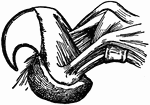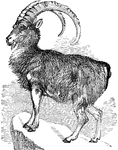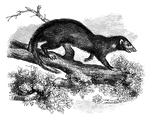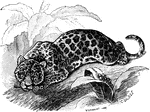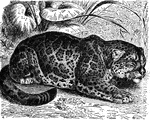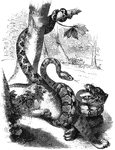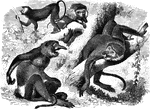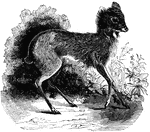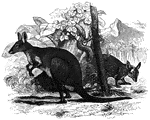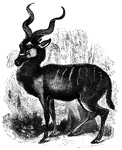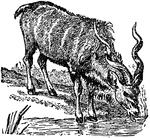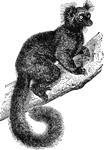The Mammals: I-L ClipArt gallery contains 111 illustrations of mammals starting with the letters "I," "J," "K," and "L" including: ibex, ichneumon, inghalla, jackal, jaguar, jerboa, kinkajou, kudu, lamb, langur, lemming, lemur, leopard, lion, llama, loris, and lynx.
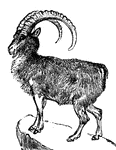
Ibex
Sure-footed hooved mammals found in mountainous areas. Males have heavily ridged horns that curve up…
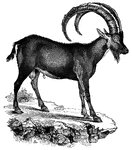
Ibex
"All noted for their large horns bending over the back, their love of the wild, rocky heights of the…
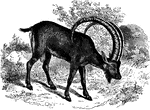
Pyrenees Ibex
"Similiar to the Ibex, but found only among the very highest peaks of the Spanish Pyrenees." —…
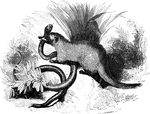
Eqyptian Ichneumon
Species of the genus Mangouste. This animal bears a close resemblance to the weasel tribe,…
Ichneumon
These mammals have pointed snouts and long bodies which they use to hunt prey of snakes or eggs.
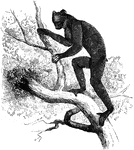
Indri
"Genus Indri: Indris. - This genus includes only a single species, the Short-Tailed Indri of Madagascar,…

Infant Kangaroo
"Outline of the Kangaroo about twelve hours after birth, showing its natural size and external development…
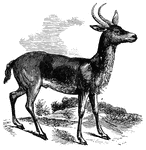
Inghalla
"Is of a deep reddish-fawn color; its lives in pairs or small families, frequenting the reedy borders…
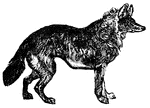
Jackal
Similar to the fox in appearance, but without the bushy tail. They are found in Africa and S. Asia.…

Jackal
Similar to the fox in appearance, but without the bushy tail. The are found in Aftrica and S. Asia.…

Jackal
"The pupil of the eye is round; the color yellowish gray above; thighs and legs yellow; ears ruddy;…
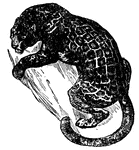
Jaguar
The jaguar can spend a great deal of time in trees, but are known to also hunt fish. They range from…

Jaguar
The jaguar can spend a great deal of time in trees, but are known to also hunt fish. They range from…
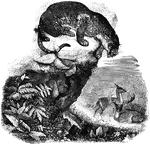
Jaguar
"Its length is four to five feet; the tail two feet; the height two feet; the ground-color of the body…

Jaguarundi
The jaguarundi (Puma yagouaroundi) is a medium-sized wild cat closely related to the puma but has a…
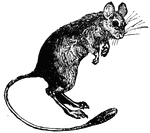
Jerboa
the jerboa have long tails with tufted ends, and long hind legs, which enable them to make enormous…
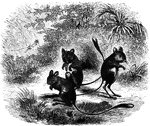
Jerboas
"These animals have the head large and rabbit-like; the ears long and pointed; the eyes full; the tail…
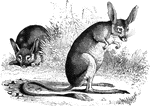
Jerboas
"These animals have the head large and rabbit-like; the ears long and pointed; the eyes full; the tail…
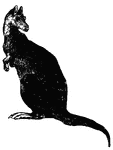
Kangaroo
Kangaroos are found in Australia, New Guinea and Tasmania. They have powerful rear legs and a muscular…
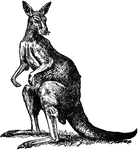
Kangaroo
"The Kangaroo is an animal of Australia, first observed by a party of sailors on the coast of New South…
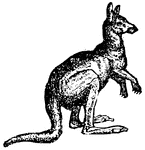
Kangaroo
Kangaroos are found in Australia, New Guinea and Tasmania. They have powerful rear legs and a muscular…
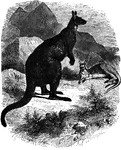
Giant Kangaroo
"It is of the size of a large sheep, and sometimes weighs one hundred and fourty pounds. The period…
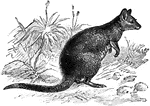
Papuan Kangaroo
They are small size and somber coloration, with the hair on the nape antrorse, the tail naked and scaly…
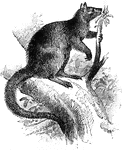
Tree Kangaroo
They are adapted for arboreal life, having the tail less robust tan that of the ground kangaroos, and…

Khulan
The Khulan or Dziggetai (Equus hemionus hemionus) is an onager, a horse species larger than a donkey.

Kinkajou
The kinkajou lives in S. America and spends most of its life in trees. It hunts at night for insects…
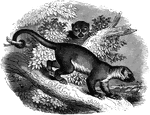
Kinkajou
"Of this genus there is a single species. A graceful animal, somewhat smaller than a cat, found in Guiana,…

Kinkajou
"Kinkajou is a genus of carnivorous mammals. They have prehensile tails, with which they hang on to…
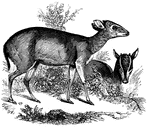
Kleene-Boc
"Is about one foot high at the shoulders; the horns one and a half inch long in the male, three quarters…
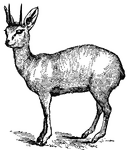
Klipspringer
The Klipspringer, or Kainsi, is a small but very active antelope (Oreotragus saltator), found in the…
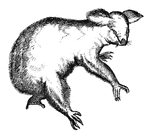
Koala
Koalas are marsupials, which means the females have a pouch of skin into which the very immature young…
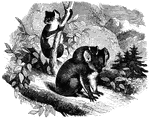
Koala
"Large as a moderate sized dog. It has long, thick and rather course fur, of an ashy-gray color; its…
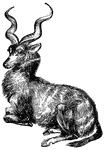
Kudu
A native of S. Africa and similar in appearance to the antelope. The male's horns are nearly five feet…
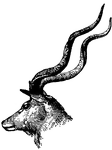
Head of Kudu
This illustration shows the head of a kudu. A kudu is a large African antelope related to the eland,…

Common Kusimanse
The Common Kusimanse (Crossarchus obscurus), also known as the Long-nosed Kusimanse, is a small, diurnal…

Cuvier's Lagotis
"Its general appearance reminds one of the hare. The body above is yellow, with a faint tinge of green…
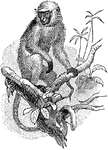
Gray Langur
The Northern Plains Gray Langur (Semnopithecus entellus) is a primate in the Cercopithecidae family…

Lemming
A rodent quadruped found in the northern parts of America and Eurasia, particularly in Norway and Sweden.…

Lemming
Lemmings are small rodents, usually found in or near the Arctic, in tundra biomes. Together with the…

Lemming
A lemming is a small, yellowish-brown rodent, closely related to the vole, and belonging to the genus…
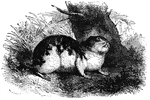
Lapland Lemming
"Of the Lemming genus, the Lapland Lemming is the most celebrated which is confined to Lapland and Norway.…

Tawny Lemming
"Is smaller than its proceeding, and resembles the Lapland Lemming. It is found about latitude 56 degrees…

Lemur
The lemur (Latin, lemures, ghosts) get their name from the fact that their movements are noiseless,…
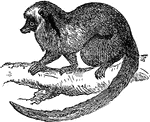
Lemur
A class of mammals allied to the monkey, and found mainly in Africa, southern Asia, and the Philippines.…
